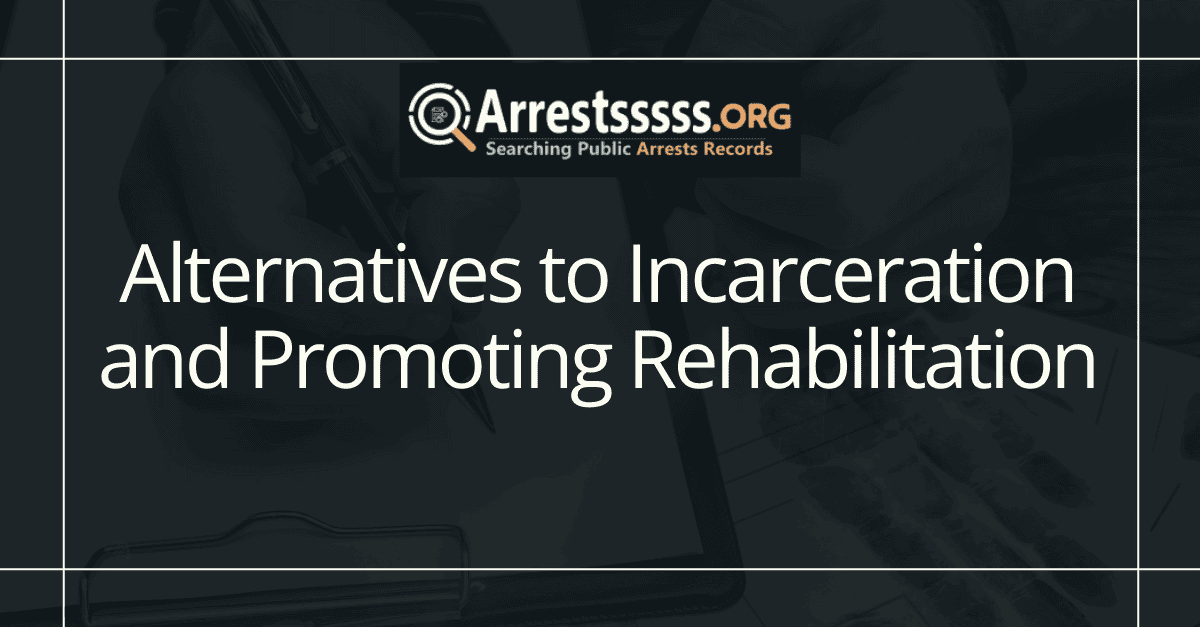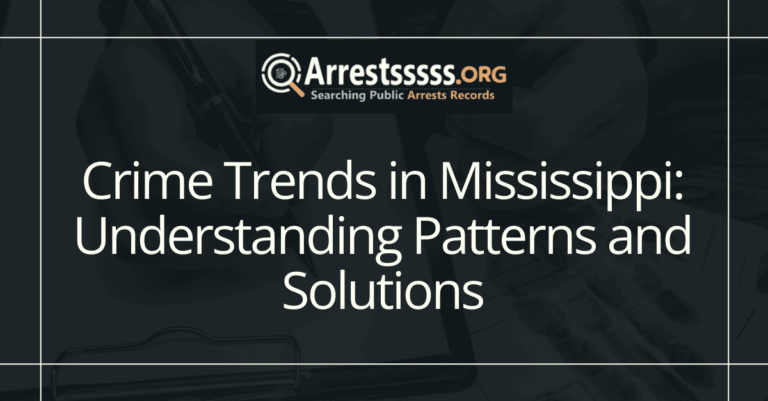Alternatives to Incarceration and Promoting Rehabilitation
Are you in need of public arrest records? Whether you’re conducting a background check or simply curious about someone’s past, accessing public arrest records can provide valuable information. In this article, we will guide you through the process of obtaining public arrest records, discuss alternatives to incarceration, and promote rehabilitation.
Determine the Jurisdiction
The first step in obtaining public arrest records is to determine the jurisdiction where the arrest occurred. Arrest records are typically maintained by local law enforcement agencies, so you’ll need to identify the agency that made the arrest. This could be a city police department, county sheriff’s office, or state law enforcement agency.
Visit the Agency’s Website
Once you have identified the appropriate agency, visit their official website. Many law enforcement agencies now offer online access to public arrest records as a convenient way for individuals to obtain this information. Look for a section on their website dedicated to public records or a specific page for arrest records.
Complete the Request Form
On the agency’s website, you will likely find a request form that you need to complete in order to access public arrest records. This form may require you to provide details such as the arrestee’s name, date of birth, and date of the arrest. Fill out the form accurately and completely to ensure a successful request.
Pay any Required Fees
Some law enforcement agencies charge a fee for accessing public arrest records. This fee may vary depending on the jurisdiction and the type of records requested. If there is a fee, it is usually payable online via credit card or electronic payment. Be prepared to provide payment information if required.
Wait for Processing
After submitting your request and paying any applicable fees, you will need to wait for the agency to process your request. The time it takes to receive the requested records can vary depending on the workload of the agency and the complexity of your request. Patience is key during this step.
Alternatives to Incarceration
While accessing public arrest records can be informative, it’s also important to consider alternatives to incarceration. The criminal justice system is evolving, and many jurisdictions are adopting alternative sentencing programs that focus on rehabilitation rather than punishment. These alternatives can include:
Diversion Programs
Diversion programs aim to divert individuals away from the traditional criminal justice system and into programs that address the root causes of their behavior. These programs may involve counseling, therapy, substance abuse treatment, or job training.
Community Service
Community service allows individuals to give back to their communities while also serving as a form of punishment. Offenders may be required to perform a certain number of hours of community service in lieu of incarceration.
Probation
Probation is a period of supervision in the community instead of incarceration. Offenders are required to follow certain conditions, such as regular check-ins with a probation officer, attending counseling or treatment programs, and abstaining from criminal activity.
Promoting Rehabilitation
Instead of focusing solely on punishment, promoting rehabilitation can help reduce recidivism rates and create safer communities. Rehabilitation programs can include:
Education and Job Training
Providing education and job training opportunities to offenders can help them acquire the skills necessary to secure employment and become productive members of society. This reduces the likelihood of reoffending.
Mental Health and Substance Abuse Treatment
Many individuals who end up in the criminal justice system struggle with mental health or substance abuse issues. Providing access to treatment and support can address these underlying factors and help individuals overcome their challenges.
Restorative Justice
Restorative justice focuses on repairing the harm caused by crime through dialogue and negotiation between the offender, the victim, and the community. This approach emphasizes accountability, healing, and reconciliation.
In conclusion, accessing public arrest records can be a useful tool, but it’s important to also consider alternatives to incarceration and promote rehabilitation. By implementing these strategies, we can work towards a more just and compassionate criminal justice system.
FAQs
What are the alternatives to incarceration?
There are several alternatives to incarceration that aim to promote rehabilitation rather than punishment. These alternatives include probation, parole, community service, electronic monitoring, and restorative justice programs. Probation allows offenders to remain in the community under the supervision of a probation officer. Parole is similar to probation but is granted to individuals who have served a portion of their sentence in prison. Community service involves individuals performing unpaid work for the benefit of the community. Electronic monitoring uses technology to track an offender’s movements. Restorative justice programs focus on repairing the harm caused by the offense and promoting healing for both the offender and the victim.
How effective are these alternatives?
Research has shown that alternatives to incarceration can be effective in reducing recidivism rates and promoting rehabilitation. For example, probation and parole have been found to be successful in reducing the likelihood of reoffending when combined with appropriate supervision and support. Community service has also been shown to be effective in promoting a sense of responsibility and accountability in offenders. Electronic monitoring can provide a cost-effective way to monitor offenders while allowing them to remain in the community. Restorative justice programs have been found to improve victim satisfaction and reduce the likelihood of future offenses.
What are the benefits of using alternatives to incarceration?
Using alternatives to incarceration has several benefits. Firstly, it can help alleviate prison overcrowding, which is a significant issue in many countries. By diverting offenders to alternative programs, prisons can focus on housing those who pose a higher risk to public safety. Secondly, alternatives to incarceration can be more cost-effective than imprisonment. Community service, for example, allows offenders to contribute to society while avoiding the high costs of incarceration. Lastly, alternatives to incarceration prioritize rehabilitation and reintegration into society, which can lead to better outcomes for offenders and the community as a whole.
What are the challenges of implementing alternatives to incarceration?
While alternatives to incarceration have many benefits, there are also challenges in their implementation. One challenge is ensuring adequate supervision and support for offenders in the community. It is crucial to provide resources and programs that address the underlying issues that contribute to criminal behavior, such as substance abuse or mental health problems. Another challenge is the need for collaboration and coordination among various agencies and stakeholders involved in the criminal justice system. This includes probation officers, parole boards, treatment providers, and community organizations. Finally, there may be resistance to change and a lack of public understanding or support for alternatives to incarceration.
Are alternatives to incarceration suitable for all offenders?
Alternatives to incarceration may not be suitable for all offenders. Some individuals may pose a higher risk to public safety and require the secure environment of a prison. Additionally, certain offenses may warrant more severe punishment. However, for many non-violent and low-risk offenders, alternatives to incarceration can be effective in promoting rehabilitation and reducing recidivism. It is essential to assess each individual’s circumstances and risks to determine the most appropriate course of action.
How can society promote rehabilitation and reintegration?
Promoting rehabilitation and reintegration into society requires a multi-faceted approach. Firstly, there needs to be a shift in attitudes and perceptions towards offenders, recognizing that they can change and contribute positively to society. Education and awareness campaigns can play a crucial role in challenging stereotypes and reducing stigma associated with criminal records. Secondly, providing access to education, vocational training, and employment opportunities can help individuals reintegrate into society and reduce their likelihood of reoffending. Additionally, offering support services such as counseling, substance abuse treatment, and mental health support can address underlying issues that contribute to criminal behavior. Finally, community involvement and support are essential in providing a network of resources and opportunities for individuals transitioning from incarceration to the community.







